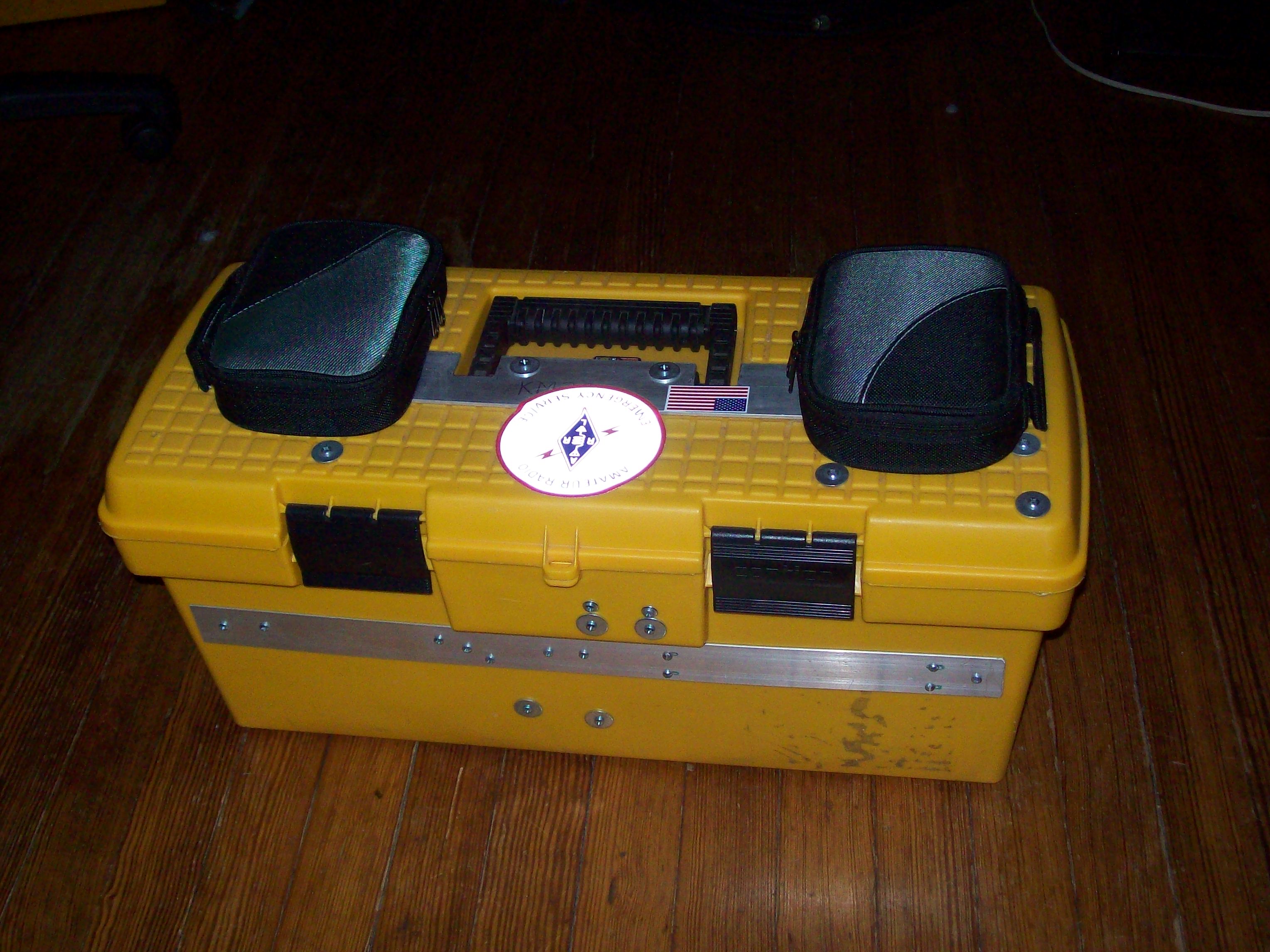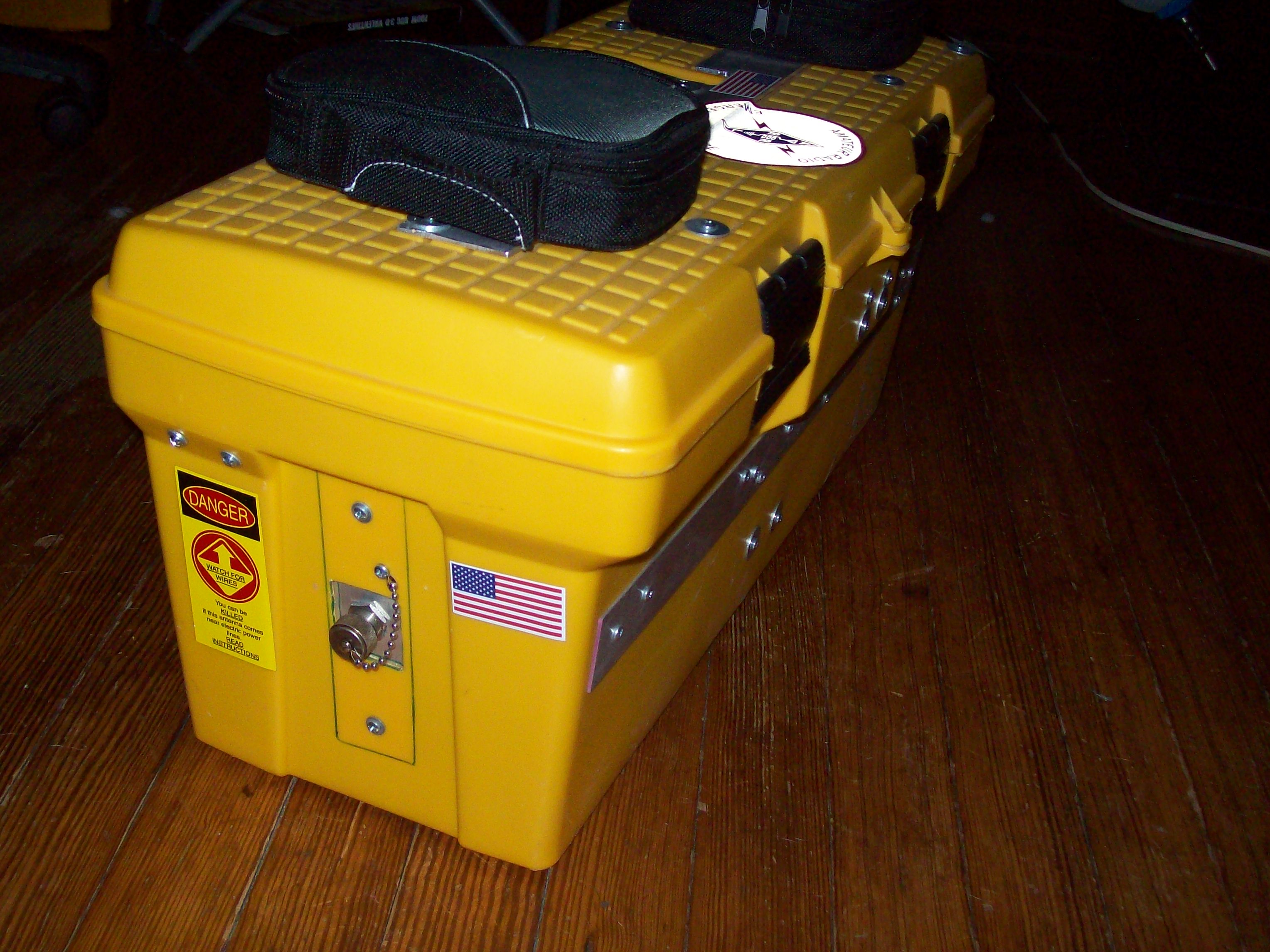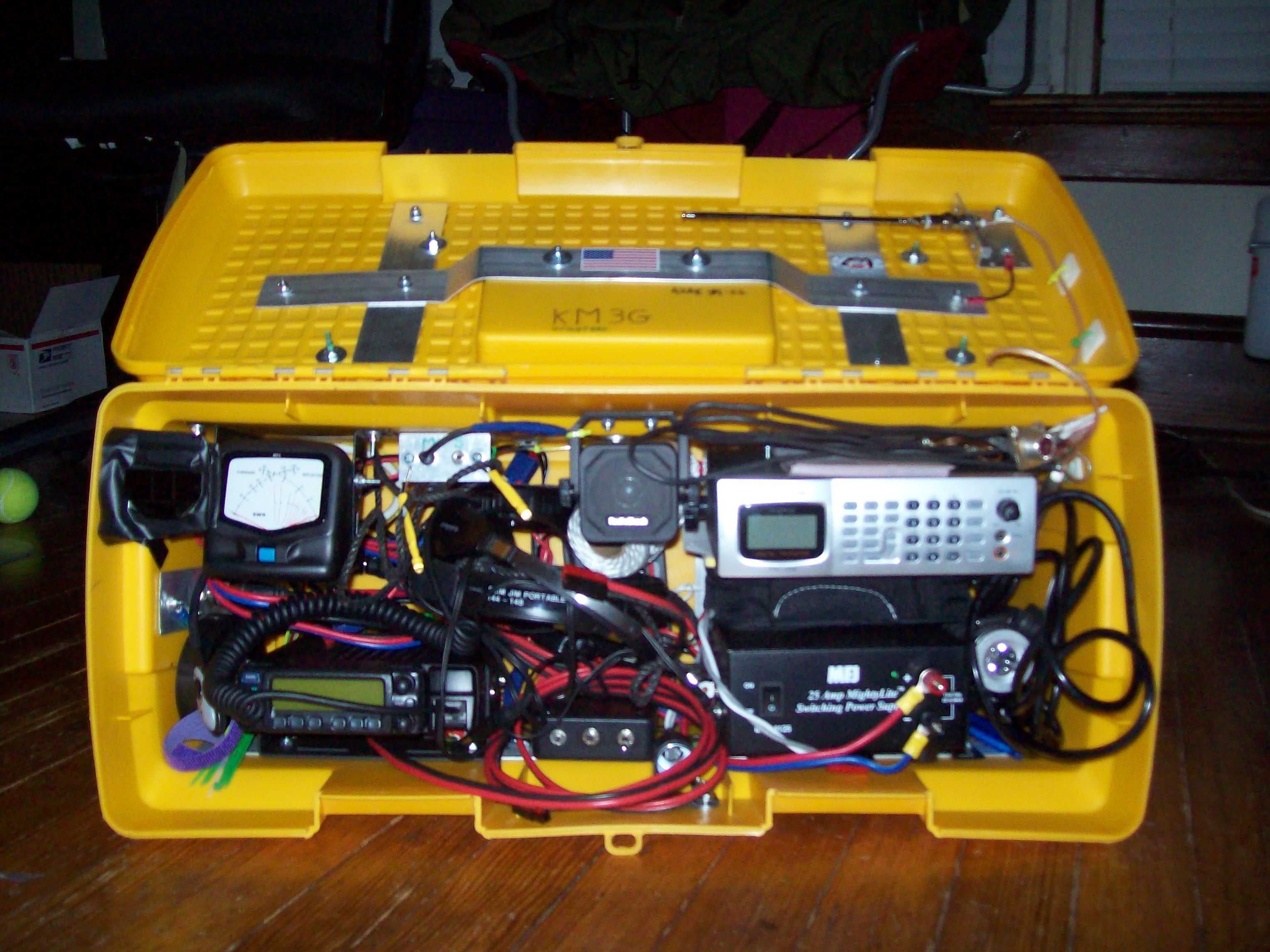| | | |
 Uploading .... Uploading ....Emergency Radio GO Box
I was dragging my radios to emergency drills in and around York county for some time. I was always nervous about lugging expensive radios around with the danger of dropping them or having stuff dropped on them in my car or trunk. I started digging around on the web and found a cool idea! It appears that other hams have had the same issues and already found a solution. They have mounted all of their gear in a toolbox of some sort. Here are a few links to their designs:
Emergency Radio Box
Radio Go Box
Here's my design: (Still a work in progress)
(have to get visio to make a block diagram) The box contains:
1) Icom IC-207 dual band rig
2) cross needle SWR meter (helps to show what the unknown antenna/coax at the high school is doing when you transmit into it)
3) MFJ 20 amp power supply to run the dual band rig off of shore power
4) Anderson power pole power distribution thing. (power strip for Andersons)
5) Radio Shack scanner
6) Cig lighter (for charging your cell or whatever)
7) voltage monitor to check battery voltage if there is no shore power
8) headphones, pencils, notepads, listing of all local repeaters, manual for IC-207, glowsticks, flashlights, AA batteries, coax, adapters, tape, etc
All this stuff put the plastic $9 dollar tool box to it's mechanical limits, so I reinforced the handle and lid with light-weight aluminum stock from the hardware store.
 

It allows me to grab one big yellow box and a 12 volt battery and I'm out the door with a complete portable 2 meter/440 Mhz station!
What's in the box you ask? The box contains a IC-207 dual band radio on the lower left. There is a SWR meter on the upper left to show you what your signal is doing while you're sitting inside. There is a MFJ 25 amp power supply on the lower right, going into a West Mountain Radio Power Pole break out connector. (in the middle, but covered with stuff) A Radio Shack digital scanner is in the upper right corner. To the left of the SWR meter is a older digital readout volt meter. That tells me if my power supply (or external battery pack) is good. In the middle is where everything loose gets thrown. It contains: Dual band roll up J pole and string to pull it up into a tree. Power pole extension cable so I can plug into a sealed battery I take with me. Headphones. (very important in noisy EOC's) On the right side, near the flashlight, is a three outlet power strip. That allows you to plug into an outlet on site and not have to pull power (for an extended time) on anything local. The left side of the box has a RF connector to the outside world.
The only downfall of this setup is that it is difficult to access the back of the equipment in the box. It would have been nice to have everything mounted to a removable frame in the box so you can access everything easily. If I ever get to worst case, i can cut through that plastic on the bottom of the box with a good knife and do what I need to do.
The top of the box has two fabric type containers bolted to it for extra storage of small items. (connectors, pens, small tools, tape, etc) They are portable hard drive cases I picked up at Wall Mart for a few dollars each. I ran small bolts through them into the lid and put fender washers on both sides. They work very nice and provide nice storage. Before the box closes, I throw in a notepad and a list of local repeaters and and a list of memory channels that are programmed into the Dual Band radio.
The three small switches on the small black box in the bottom, center control lights and the cig outlet. switch 1: lights in the SWR meter. Switch 2: automotive LED lights to provide local lighting on the desk in front of you. Switch 3: turns on the cig outlet, bottom center.
External to the box:
1) 50 foot orange extension cord. (primary power)
2) 50 foot coax.
3) 55 Amp Hour Gel cell. (or 150 amp hour deep cycle Marine battery if you feel strong)
4) Arrow dual band antenna (primary antenna)
6) Set of mil-surplus fiberglass 4 foot mast sections with a triangle mast combiner. That allows me to put up the arrow dual band antenna (free standing) in under 3 minutes to a height of about 12 feet.
It's all a bit much to push into a little plastic box. If I do it over, I'll look for a slightly tougher box. I've used it a few times at drills and at field day to access our local repeater.
|
|
|
| | | |
|